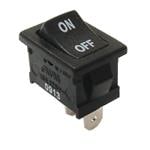Kawasaki CORLEO: the wolf-inspired four-legged robot
Kawasaki Heavy Industries has introduced a prototype hydrogen-powered, four-legged robot designed to carry human riders. The machine, named CORLEO, was presented at a showcase event in the lead-up to the Osaka-Kansai Expo 2025.
Inspired by wolves and other agile animals, CORLEO features four robotic legs that allow it to navigate rough and uneven terrain. Designed as an alternative to traditional off-road motorcycles, the robot is intended for recreational and exploration purposes, particularly in mountainous areas. Riders mount CORLEO similarly to a horse, with the company describing the experience as beginner-friendly and focused on stability and manoeuvrability.
The robot operates using a hydrogen fuel cell in combination with a 150cc engine. Kawasaki indicates that this approach aligns with Japan’s broader push towards hydrogen energy and reduced carbon emissions. The vehicle is positioned as a long-term project, with commercial release projected within the next 25 years.
The four legs function independently, equipped with artificial intelligence systems that support real-time balance adjustments and navigation. Rather than relying on traditional controls, CORLEO responds to the rider’s shifts in body weight, adjusting its gait and direction accordingly. A heads-up display provides information on hydrogen levels, terrain navigation, and body weight distribution. As a concept vehicle, detailed performance specifications—including speed, range, and battery endurance—have not yet been released.
Kawasaki suggests that CORLEO could represent a future replacement for conventional off-road motorcycles. The company, which also manufactures bullet trains, aerospace engines, and heavy vehicles, has positioned the robot as part of its broader transition toward next-generation mobility solutions.
The development follows the 2023 unveiling of the hydrogen-powered Ninja H2 HySE motorbike, which was demonstrated at the Suzuka Circuit. Kawasaki described that launch as part of its commitment to alternative fuel vehicles and achieving carbon neutrality. The introduction of CORLEO marks a continuation of this strategic direction, with an expanded focus on robotics and intelligent mobility systems.
Broader robotics ambitions
Kawasaki is also increasing its investment in industrial and educational robotics. The CL series, a range of collaborative industrial robots, is under development to operate in high-temperature environments and manage heavy industrial tasks such as welding, machine tending, and palletising.
In parallel, the company is exploring educational applications with Astorino, a robot developed to support the teaching of robotics and manufacturing skills in classrooms. This initiative aims to provide students with a more interactive and practical approach to STEM education.
Since establishing its robotics division in 1989, Kawasaki has built a strong presence in automation, becoming one of the most recognised industrial robotics companies globally. It continues to expand through partnerships and innovations, including a recent collaboration with AMT Precision Parts and Olis Robotics to create a remote monitoring and control system for industrial environments.
Through projects like CORLEO, the CL series, and Astorino, Kawasaki is signalling a shift in its long-term strategy—one that blends sustainability with intelligent machine design and broadens the scope of robotics beyond traditional manufacturing.
For more animal-inspired robots, see our top 10, here.







